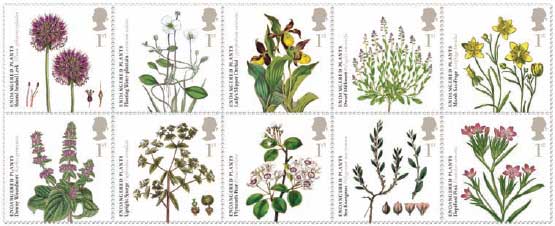Humans have caused almost 600 plant species to be wiped from existence over the past 250 years in a long term trend which scientists have described as an “unprecedented” rate of decline. An analysis of all plant extinction records documented from across the world by scientists at the Royal Botanic Gardens, Kew and Stockholm University found 571 known plant species had completely disappeared from the wild since the industrial revolution. This is more than twice the number of birds, mammals and amphibians which have become extinct over the same period combined.
Plant extinction is occurring as much as 500 times faster than natural background rates of extinction among plant species or the normal rate of loss in earth’s history before significant human intervention. Although fewer species of animal have died out, their rate of decline is even faster – at least 1,000 times faster than background rates of extinction, underlining the impact humans are having on life on our planet.
Plant extinctions “endanger other organisms, ecosystems and human well-being, and must be understood for effective conservation planning”, said the authors of the study, published in the journal Nature Ecology & Evolution. “Most people can name a mammal or bird that has become extinct in recent centuries, but few can name an extinct plant," said lead author Dr Aelys Humphreys, an assistant professor at Stockholm University. “This study is the first time we have an overview of what plants have already become extinct, where they have disappeared from and how quickly this is happening. We hear a lot about the number of species facing extinction, but these figures are for plants that we’ve already lost, so provide an unprecedented window into plant extinction in modern times.”
The highest rates of plant extinction are found on islands in the tropics and in areas with a Mediterranean climate, researchers found. These typically biodiverse regions are home to many unique species, but they have been particularly vulnerable to human activities. Woody plant species such as trees and shrubs, which inhabit a small geographical range, such as those confined to small islands, were among the most likely to be reported extinct.
This finding, the authors suggest, indicates the increase in extinction rate could be due to the same factors that are documented as threats to many surviving plants: fragmentation and destruction of native vegetation resulting in the reduction or loss of habitat of many range-restricted species.
Dr Eimear Nic Lughadha, co-author and a conservation scientist at Royal Botanic Gardens, Kew said: “Plants underpin all life on earth, they provide the oxygen we breathe and the food we eat, as well as making up the backbone of the world’s ecosystems – so plant extinction is bad news for all species.
Examples of unique plant species which we have lost in recent years include the Chile sandalwood, Santalum fernandezianum, which was a tree that grew on the Juan Fernández Islands which lie between Chile and Easter island. From around 1624, the tree began to be heavily exploited for the aromatic sandalwood, and by the end of the 19th century most of the trees had been cut down.
The researchers also highlighted the demise of the banded trinity, Thismia americana, which was “possibly one of the most extraordinary plants ever to be discovered”. It had no leaves and only the flowers were visible above ground. It was discovered in 1912 along Torrence Avenue in South Chicago. The site was, however, destroyed just five years later and this extraordinary plant was never seen again. Regular searches in remaining pockets of similar habitat in Chicago have been undertaken without success.
Source: The Independent, 10 June, 2019
https://www.independent.co.uk/environment/plants-extinction-rate-life-e…

- Login om te reageren
